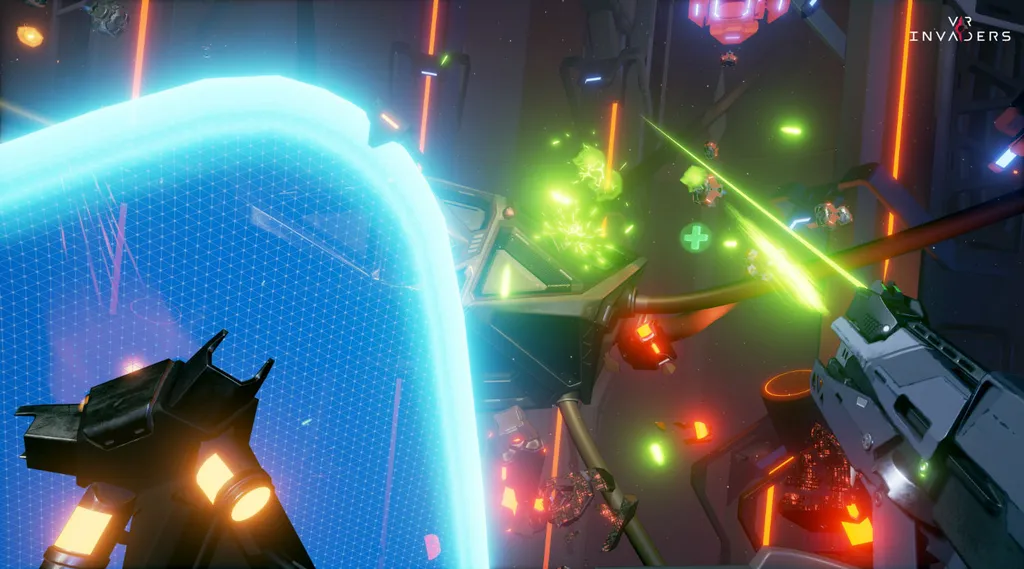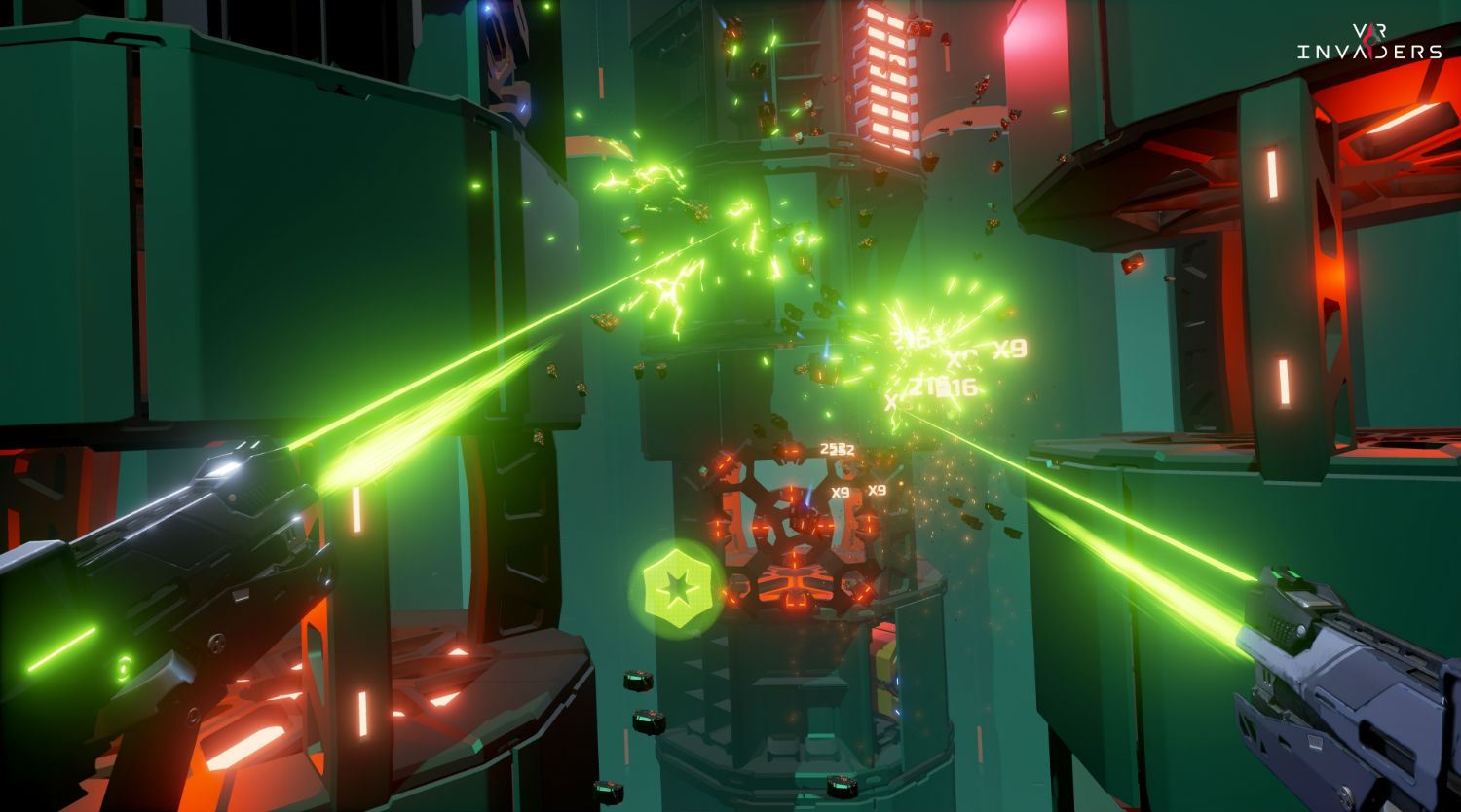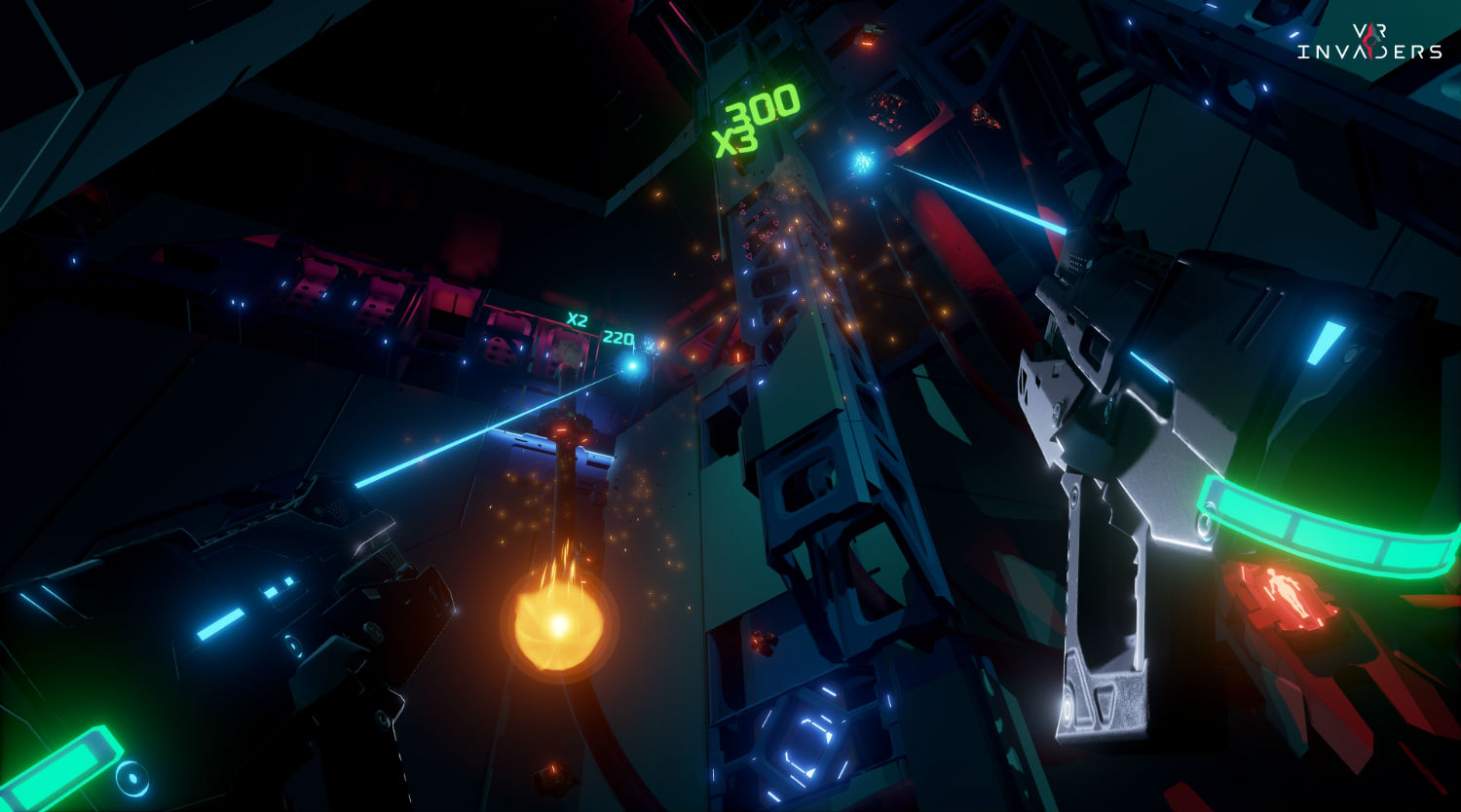VR Invaders gets straight down to business, so we will too. You’ll probably know the drill by now; this is a first-person wave shooter that uses position-tracked controls to simulate a gun and, in this case, a shield. You’ll use both to fend off droves of enemies that pour in. After reviewing Bandit Six, Dick Widle, Unearthing Mars and others in the past few weeks and months, it’s getting increasingly harder to differentiate between games in this genre.
I will say this, though, Invaders is one of the better VR shooters I’ve played in recent weeks.
It’s not that developer My’s crafted a particularly unique game, nor that there are memorable story elements of any multiplayer options. What Invaders has on its side is rock solid, reliable mechanics with closer attention paid to important factors like enemy variety and difficulty.
There’s a bare bones story in place here, casting a thin veil over what it’s essentially a meat and potatoes VR shooter, right down to its design. Set in 2046, you play as a Hacker that enters VR to take down viruses, which are represented as robotic drones. Lines of dialogue appear between and during levels but, tellingly, you can turn it all off in the main menu and get down to what really matters; the gameplay.
Invaders equips you with a standard, fast-firing pistol and a shield that can defend small energy blasts, but will need cooldown time if it comes into contact with anything bigger. You can also shoot incoming attacks with your own bullets to stop them, which counts towards a multiplier. That multiplier is built up by killing enemies in quick succession, and they’ll fly in in coordinated patterns so that, should you choose, you can memorize levels and aim to high scores.
Building up a multiplier is hard work and will require intricate knowledge of when and where enemies are going to appear from. To me, that gives Invaders an appreciated sense of replayability akin to a more traditional shoot ’em up.
But if you’re not into score-chasing then the base game still offers a pretty intense challenge on the higher difficulty modes. Your shield has a slowdown mechanic which will buy you a few seconds’ breathing space, but it’s easy to forget about it in the chaos. Even on Normal some of the eight levels prove tricky, and require maximum skill and dexterity on the harder settings. Each level ends with a fun boss fight that often prove to be the highlight.
I loved systematically taking out turrets at the end of the sixth level, and really struggled with the laser-spouting behemoth at the end of the fifth. If you’re someone that likes to be challenged and get moving in VR then you’ll definitely want to ramp up the difficulty and clear our some room space so you can dodge incoming attacks too.
Outside of the story — which has about an hour’s worth of content that you’ll stretch out with replays — there’s a survival mode and and shooting range. The former offers some longevity once you’ve cleared through the campaign in every conceivable way you’d want to, though ultimately there isn’t too much to this package.
VR Invaders is a rock solid example of the wave shooter genre that is flooding the industry right now. It’s not original or even particularly memorable, but its mechanics are refined and its gameplay is entirely reliable (it gets extra points for a competent PlayStation VR port, too). It’s soon forgotten but appreciated while it’s there.




























